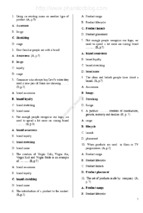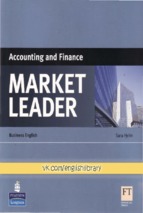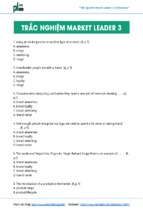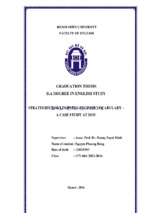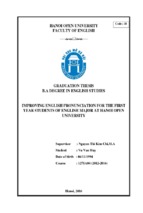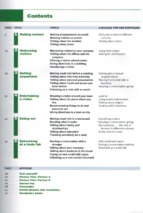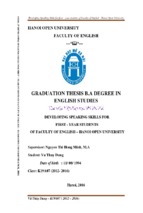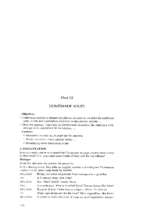COMMITTED TO
IMPROVING THE STATE
OF THE WORLD
Global Risks 2009
A Global Risk Network Report
A World Economic Forum Report
in collaboration with
Citigroup
Marsh & McLennan Companies (MMC)
Swiss Re
Wharton School Risk Center
Zurich Financial Services
World Economic Forum
January 2009
The information in this report, or on which this report is based, has been obtained from sources that the authors believe to
be reliable and accurate. However, it has not been independently verified and no representation or warranty, express or
implied, is made as to the accuracy or completeness of any information obtained from third parties. In addition, the
statements in this report may provide current expectations of future events based on certain assumptions and include any
statement that does not directly relate to a historical fact or a current fact. These statements involve known and unknown
risks, uncertainties and other factors which are not exhaustive. The companies contributing to this report operate in a
continually changing environment and new risks emerge continually. Readers are cautioned not to place undue reliance on
these statements. The companies contributing to this report undertake no obligation to publicly revise or update any
statements, whether as a result of new information, future events or otherwise and they shall in no event be liable for any
loss or damage arising in connection with the use of the information in this report.
This work was prepared by the Global Risk Network of the World Economic Forum.
World Economic Forum
91-93 route de la Capite
CH-1223 Cologny/Geneva
Switzerland
Tel.: +41 (0)22 869 1212
Fax: +41 (0)22 786 2744
E-mail:
[email protected]
www.weforum.org
© 2009 World Economic Forum
All rights reserved.
No part of this publication may be reproduced or transmitted
in any form or by any means, including photocopying and recording, or by any
information storage and retrieval system.
ISBN: 92-95044-15-0
978-92-95044-15-9
REF: 060109
7
2
6
31
29
1
5
19
4
50-250 billion
34
13
23
3
21
14
30
25
32
35
18
17
15
22
26
11
8
20
10
36
27
2-10 billion
9
16
24
10-50 billion
Severity (in US$)
250 billion-1 trillion more than 1 trillion
Figure 1: Global Risks Landscape 2009: Likelihood with Severity by Economic Loss
28
12
33
below 1%
1-5%
5-10%
10-20%
above 20%
Likelihood
Based on an the assessment of risks over a 10 year time horizon by the Global Risk Network
Key: Boxes indicate change since last year’s assessment
Increased
Decreased
Stable
New risk for 2009
Likelihood Severity
Source: World Economic Forum 2009
ECONOMIC
1
Food price volatility
2
Oil and gas price spike
3
Major fall in US$
4
Slowing Chinese economy (6%)
5
Fiscal crises
6
Asset price collapse
7
Retrenchment from globalization (developed)
8
Retrenchment from globalization (emerging)
9
Regulation cost
10
Underinvestment in infrastructure
GEOPOLITICAL
11
International terrorism
12
Collapse of NPT
13
US/Iran conflict
14
US/DPRK conflict
15
Afghanistan instability
16
Transnational crime and corruption
17
Israel-Palestine conflict
18
Violence in Iraq
19
Global governance gaps
ENVIRONMENTAL
20
Extreme climate change related weather
21
Droughts and desertification
22
Loss of freshwater
23
NatCat: Cyclone
24
NatCat: Earthquake
25
NatCat: Inland flooding
26
NatCat: Coastal flooding
27
Air pollution
28
Biodiversity loss
SOCIETAL
29
30
31
32
33
Pandemic
Infectious disease
Chronic disease
Liability regimes
Migration
TECHNOLOGICAL
34
CII breakdown
35
Emergence of nanotechnology risks
36
Data fraud/loss
Contents
Preface
4
Executive Summary
5
1. The Global Risks Landscape 2009
6
2. The Financial Crisis and Global Risks
9
3. Resource Challenges, Sustainability and Competition
16
4. Global Governance: a Key to Global Stability and Sustainability
21
Appendix 1: The Risk Assessment and Risk Barometer
27
Appendix 2: Global Risks Report: Process and Definition
32
Contributors and Acknowledgements
33
3 | Global Risks 2009
Preface
2009 will be a year of learning the lessons of the financial
crisis; a year where its reach in terms of time and scope
becomes more evident; a year that calls for a new
financial architecture to be shaped. At the same time, it
will be a year that will test the resolve and willingness of
world leaders to collaborate and take action to move
beyond this crisis. The global risks landscape is a
crowded one and the window of opportunity we have to
address some of the largest challenges of our time is
narrow.
Global Risks 2009 looks at the risks, economic and other,
that could emerge as the financial crisis continues to
unfold. The report considers the implications of a sudden
drop in China’s growth to 6% or below; deteriorating
fiscal positions; and further asset price falls. Given the
vulnerable state of the global economy, and as
deleveraging continues across the financial system,
further shocks could have severe and far-reaching
consequences. The degree to which the world has lost
confidence in its institutions and systems is serious.
Without confidence we could face a protracted and
potentially calamitous, downward spiral. Governments,
central banks and regulators must avert this but must
also avoid inadvertently sowing the seeds of future crises.
They need to restore confidence at all levels; to
consumers and house-owners, to investors, and in and
among financial institutions. This crisis exposed the
weaknesses of governance systems. Good governance
and leadership will help rebuild confidence, enable
alignment across regions and industries, and encourage
collaboration.
With world attention focused on the immediate economic
challenges, this report also warns against losing sight of
4 | Global Risks 2009
longer term risks. Now is the time for leaders to look
ahead. Risks related to climate change, unresolved
resource issues and potentially more defensive and
protectionist stances by states could lead to a conflation
of these global risks with significant societal and
economic costs. Again, better governance at corporate,
country and global level is necessary to provide the
frameworks for stable international relations, and for
states and corporations to create greater certainty and
trust. Successful mitigation of global risks will only be
possible once confidence in global governance
institutions is restored, starting by ensuring that they are
adapted to today’s challenges and revising their mandate
and powers accordingly. They must be able to function in
a proactive and coordinated fashion, fostering
cooperation across all regions, industries and stakeholder
groups.
Global Risks 2009 builds on the insight and experience of
the Forum’s unparalleled network of political and business
leaders, experts and academics. We are grateful for the
continued commitment of our partners on this report:
Citigroup, Marsh & McLennan Companies (MMC), Swiss
Re, The Wharton School Risk Center and Zurich Financial
Services. This report takes a long-term approach to risk,
looking ten years ahead, while not forgetting that
decision-makers must respond to the crisis today with
the consequences that carries for their countries and
enterprises. Above all, Global Risks 2009 provides a
framework for leaders to think about risk and how the
risks that they face in the short term in their region and
business link to the longer term risks, with global
implications. While the mitigation of the risks considered
here will demand leadership, commitment and resources
across all stakeholder groups, they may also yield
opportunities and strengthen the ties between different
parts of the world. 2008 has proven the extent to which
the world is subject to global risks; let 2009 be the year
where the world finds a common agenda to begin
mitigating their impact.
Klaus Schwab
Founder and Executive Chairman
World Economic Forum
Executive Summary
2008 was an historic year. Financial disruptions triggered
by declining house prices in the US grew into a global
credit crisis of systemic proportions. By the second half
of the year, most advanced economies had entered a
recession. The downturn spilled over into emerging
markets, increasing the likelihood of a global contraction
in 2009. Although the world has seen several financial
crises, this one differs in two respects. First, it has
demonstrated just how tightly interconnected
globalization has made the world and its systems.
Second, this crisis was driven by developed economies
using unprecedented levels of debt and leverage
throughout the financial system. Thus, risks that had
been identified in the past two editions of this report – the
risk of a global meltdown in asset prices (2007) and the
widespread mispricing of risk and the potential
implications of systemic financial risk (2008) – have
materialized with huge consequences.
The focus of the report
This year’s report focuses on the effects of the global
financial crisis and its implications for those risks that
came to the fore of the Global Risk Network assessment
for 2009. They include: a sudden further drop in China’s
growth to 6% or below; deteriorating fiscal positions;
further asset price falls; increasing resource-related risks
due to climate change; and the failure of global
governance to mitigate global risks. The highly
interconnected nature of these risks means that their
impact is truly global. The economic outlook for 2009 is a
grim one for most economies; markets remain volatile,
liquidity has not returned, unemployment is rising, and
consumer and business confidence has fallen to record
lows. In this climate, risks become even more potent in
their impact and, as discussed in previous reports, the
tendency towards panic and short-term responses are
more pronounced. This report explores the dangers of
managing out of this crisis, without considering the
broader, long-term consequences of today’s decisions. It
also stresses the need for a determined, global focus on
balancing the response to the immediate challenges with
a concerted effort to mitigate longer term risks, not least
those relating to climate change and resources.
particularly pertinent to the current environment. Linking
to the discussion on the response to the financial crisis,
the risk of over-regulation and lack of a coordinated
approach to regulation at a global level makes its first
appearance in the assessment. The same is true of
underinvestment in infrastructure, a risk that is highly
interconnected with a number of economic,
environmental and societal risks. In terms of both
economic impact and loss of life, health risks, including
chronic and infectious diseases, as well as the ongoing
risk of a major pandemic, continue to dominate.
Conflicts, in particular intra-state conflict, and terrorism
continue to mar the lives of millions worldwide and their
effects reach far beyond the costs to the populations they
directly touch.
Global Risks 2009 offers an assessment of how the focus
risks interconnect with others and how they may evolve
over time. It also raises many questions about the risk of
ignoring other potential crises when dealing with a current
one. The events of 2008 underscored the importance of
two major ideas behind the work of the Global Risk
Network: global risks can only be understood when
explored in the context of their interlinkages with other
risks and no one group acting alone can mitigate them
effectively. These aspects of global risks are also why
they pose such a challenge for policy-makers and
business leaders alike. However, as they try to resolve
this situation as quickly as possible, leaders must be
mindful of the long-term implications of today’s decisions.
The report also considers the impact of the financial crisis
and economic environment on a few risks introduced for
the first time in 2008 and others that the Global Risk
Network has tracked for several years. Many of these are
5 | Global Risks 2009
1. The Global Risks Landscape 2009
These pages should be read with the front inside flap open for an overview of all charts
How the global risks landscape has evolved since
last year
The following risks came to the fore in the assessment
for 2009, both in terms of likelihood and severity and the
degree to which they are “pivotal” risks, i.e. that they are
at the nexus of many risks.
Deteriorating fiscal positions
The deterioration of fiscal balances in several major G8
countries and other economies was judged as
increasing in both likelihood and severity. From the
interconnections map it can be seen that this risk is
linked to a number of other central economic, societal
and economic risks: retrenchment from globalization, a
fall in the US dollar, further asset price declines, the rise
of chronic diseases and underinvestment in public
infrastructure.
China hard landing
Though the most recent World Bank forecast (November
2008) suggests China will still achieve growth of 7.5% in
2009, given the importance of China in terms of its
potential to be a source of global growth and given its
massive net-creditor position mainly with respect to the
US, a slowdown to 6% or below in China’s growth rate
would have significant impact on the already weak
global economy. This risk is highly connected to a fall in
the US dollar, to energy and food price risks, and to
health risks.
Asset price collapse
Though the effects of sharply declining asset prices are
already playing out, the assessment continues to place
this risk as very high on both the likelihood and severity
scale across different asset classes and regions. Many
Figure 2: Risks Interconnection Map (RIM) 2009
Source: World Economic Forum 2009
Node size: denotes severity, Node colours: red – economics; dark green – geopolitics; light green – environmental; purple – technology; blue – society
Lines: line thickness denotes the strength of the interlinkage. The direction of a thicker line segment indicates when one risk is the stronger in the relationship.
Proximity: the map shows risks that are tightly interlinked to many other risks as closer to one another.
6 | Global Risks 2009
1
30
40,000-200,000
200,000-1,000,000
29
31
24
18
26
13
14
20
19
25
8,000-40,000
Severity (number of deaths)
>1,000,000
Figure 3: Global Risks Landscape 2009: Likelihood with Severity by Number of Deaths
21
10
33
12
22
11
15
17
1,600-8,000
23
below 1%
34
16
35
1-5%
5-10%
10-20%
above 20%
Likelihood
Source: World Economic Forum 2009
Please see inside flap for key
experts expect the decline in asset prices to continue
over the coming months as the financial crisis unwinds
further and the recession leads to bankruptcies and
credit defaults.
itself. The assessment places this gap as highly likely
and severe in its impact. As the interconnections map
shows, weak global governance sits at a central position
between geopolitical, economic and environmental risks.
Resource challenges
Linking several of the risks on the assessment, including
climate change-related weather events and declining
water quality and availability as well as energy, these
longer term risks have remained almost constant since
the last assessment. Nearly half of the world’s population
already live in high water stressed areas and the links to
food security, geopolitical and health risks are strong. In
this report, the linkage between energy, water and land
is discussed more fully.
A note on health-related risks
Though not discussed extensively in this report, chronic
disease, infectious disease and pandemics all remain
high on the assessment, particularly in terms of potential
severity in economic and loss of life indices. Chronic
disease, in particular, is not only prominent in the
assessment but is also central on the interconnections
map, linking strongly to food prices and infectious
disease but also to China’s growth and fiscal crises.
According to the World Health Organization (WHO),
chronic diseases (including heart disease, stroke, cancer,
chronic respiratory disease and diabetes) are currently
the cause of 60% of deaths annually worldwide, of
which 80% occur in low- and middle-income countries.
Health spending already represents a significant burden
on public spending, which will increase as fiscal
positions deteriorate and budgets come under pressure.
Global governance gaps
Introduced for the first time in the 2009 assessment,
experts and Global Risk Network members deemed the
absence or lack of effective and inclusive governance on
global issues such as financial stability, trade, climate
change, water and security as a source of risk in and of
7 | Global Risks 2009
Figure 4: Exposure of 160 Countries to 24 Global Risks
1.0
AF
Geopolitical, Environmental, Health, Technical risks
PK
IQ
Asian countries
0.8
IN
GE
ET
CN
ZW
SD
ID
0.6
AL
US
CD
SN
UK
TM
0.4
KW
SA
QA
LY
African countries
CA
HK
BR
AT
0.2
NO
FI
SG
NZ
CH
ISL
SE
European countries
0.0
0.0
0.2
0.4
0.6
0.8
1.0
Economic risks
Africa
Asia
Australia Pacific
Europe
N America
S America
Source: Zurich Financial Services, 2008
Country exposure to global risks
As the Risk Interconnections Map (RIM) offers an overview of linkages, a complementary approach is to consider the
ramifications of these interactions at regional and country level. The chart below is derived from a model looking at
the global risk exposure of 160 countries*. The model uses 24 of the global risks that are assessed in this report.
Below, country exposures to economic risks (on an increasing scale, from low to high), which can change rapidly, are
depicted on the horizontal axis. Exposures to more slow-moving environmental, geopolitical, health and technological
risks are displayed vertically (also on an increasing scale, low to high).
Looking at different clusters, the chart underscores regional clusters and outliers. It reveals a fairly high level of
cohesion with respect to economic risks among European countries. In contrast, the variation in risk exposures is far
larger along the domain that includes geopolitical, environmental, health and technological risks. A closer analysis of
the individual risks (not shown here) suggests that drivers for dispersion in Europe are mainly geopolitical and, to a
lesser degree, environmental risks, with particularly high exposures to geopolitical risks in countries of the former
Soviet Union.
The picture for Asia is reversed. Asian countries are much more diverse with respect to their exposures to economic
risks, but comparatively tightly clustered – however at a higher median risk level – when it comes to the geopolitical
and environmental risk dimensions.
African countries form, in general, a comparatively tight cluster with respect to environmental, geopolitical, health and
technological risks dimensions. Note that their median exposure is lower than that for Asian countries, and also that
Africa is not quite as strongly exposed to economic risks as is Asia. Though this chart should only be taken as a tool
to explore possible risk exposure, it does suggest that certain regions and countries have the potential to reduce their
overall risk exposure along one or the other axis.
8 | Global Risks 2009
* For a note on the tool behind this chart please see Appendix 2
2. The Financial Crisis and Global Risks
A crisis in an interconnected world
Over the past 18 months, a crisis that began in a small
segment of the US housing market evolved into a global
credit crisis of systemic proportions. After the demise of
Lehman Brothers and the near-collapse of AIG in
September 2008, credit markets became dysfunctional
and capital flows that had already slowed ground to a
halt. As global banks continued to reduce leverage, the
impact of the crisis began to engulf households and
businesses around the world. By the end of 2008, most
advanced economies were simultaneously in recession
for the first time since World War II, reducing growth
prospects in emerging markets due to lower demand for
export goods. As a consequence, global growth is
expected to remain below potential in 2009 and 2010.
The speed at which these events unfolded was
unprecedented. In Global Risks 2008, “panic” was
identified as an element of the anatomy of a systemic
financial crisis that in this case exacerbated pressure on
asset prices and induced contagion effects to the rest of
the financial system and around the globe. In this sense,
2008 served as a reminder of how the world and its risks
are highly interconnected. Contagion not only arises
through linkages in trade and finance, but also through
the often complex interaction of risks that increases
uncertainty and renders decisions more difficult (see
Figure 2, page 8).
Increased short-term economic risks and focus on
the long term
As discussed in the last two global risks reports, the
collapse of asset prices marked only the beginning of a
complex chain of events that exposed numerous
systemic vulnerabilities and triggered other risks and
potentially adverse developments. The salient risks likely
to affect the global economy through 2009 include:
• Deteriorating fiscal positions. The US, United
Kingdom, France, Italy, Spain and Australia are all
already running high deficits. Massive government
spending in support of financial institutions and growth
are threatening to worsen fiscal positions that are
already precarious in many countries. The convergence
of this decline with rising health and pension costs in
industrialized economies due to demographic trends
will place further fiscal pressure on governments1.
• A further significant reduction in China’s growth.
The decline in export demand has led to a substantial
reduction in China’s overall economic growth,
increasing considerably the risk of a hard landing that
would stress the financial system and could generate
social tensions within China and beyond as other
economies face similar declines. Over recent years,
China built up nearly US$ 2,000 billion in foreign
reserves to prevent the renminbi appreciating. Although
starting mid-2007 China began to allow a moderate
appreciation, the trend reversed towards the end of
2008 with the rapid rise of the US dollar relative to
most other currencies.
• Continued depreciation of asset prices. Although
global equity markets have declined on average by
more than 50% in a very short time, the vicious circle
between falling asset values, write-downs and
attendant pressure on the capital position of financial
institutions and continued deleveraging appears to be
unbroken. This vicious circle is now affecting
manufacturing, services and households around the
world and the credit crunch has generated a
substantial weakening of economic activity and
growing credit losses.
• Deflation replaces inflation as a key concern.
In Global Risks 2008, the impact of high energy and
food prices in combination with rapid credit growth
were strongly linked to concerns about inflation. A year
later, uncertainty in the financial sector, falling asset
prices, poor credit conditions, weak demand and rising
unemployment could create a deflationary spiral.
However, the short-term risk of deflation must be seen
in the context of a long-term inflation risk caused by
the large monetary stimulus in pursuit of financial and
economic stability and the risk posed by the growing
public debt. Economic history is littered with periods
during which governments reduced their debt burden
through inflation.
1Pension and healthcare reform is examined in a recent World Economic Forum study entitled Financing Demographic
Shifts: The Future of Pensions and Healthcare in a Rapidly Ageing World: Scenarios to 2030, World Economic Forum, 2008.
9 | Global Risks 2009
Figure 5: Country Exposure to Asset Bubbles and Economic Risks
1.0
Eastern European
LT
East Asian
Western European
ZA
0.8
PE
CL
KR
BR
DZ
Asset bubble risk
EC
0.6
NG
NO PK
CN
CO
VE
AR
US
JP
HK
VN
SG
TH
PY
BO
0.4
Africa
SO
UZ
LR
0.2
AF
0.0
0.0
0.2
0.4
0.6
0.8
1.0
Economic risks
Africa
Asia
Australia Pacific
Europe
N&C America
S America
Source: Zurich Financial Services, 2008
Country Exposure to Asset Bubbles and Economic Risks
Before the current global downturn, it was often claimed that emerging markets had decoupled from advanced
economies. It is clear, however, that with respect to cyclical changes, emerging and advanced economies continue to
be closely correlated; a fact that may have been masked by years without sharp recessions.
Developing and emerging market countries are tightly clustered with respect to economic and asset bubble risks but
to different degrees. African countries, for example, have relatively fewer financial and real assets, and thus lower
exposure to asset bubbles. Even their overall exposure to economic risks is small, reflecting in part their lagging
integration into global markets.
In contrast, East Asia shows high exposures to economic and asset bubble risks; in fact, their overall exposure is very
similar to Japan and the US. Most Asian economies are heavily exposed to a hard landing in China. Asia is also
subject to risks related to the price of oil, dollar fluctuations and a retrenchment from globalization, with the latter
being especially acute for the small and open economies of Hong Kong SAR and Singapore.
10 | Global Risks 2009
* For a note on the tool behind this chart please see Appendix 2
Beware of unintended consequences
The risks associated with a decline in China’s growth,
deteriorating fiscal positions and deflation illustrate the
need for forward-looking policies. While it is essential for
leaders to respond forcefully to the current financial
market instability and the risk of a global recession, they
must also be mindful of the implications that today’s
decisions have in the long term. Risks related to
underinvestment in infrastructure, for example, or the
degradation of natural resources and climate change,
may be low in the short term, but these risks and
associated losses increase in a longer time horizon.
Policy-makers must also consider the unintended
consequences arising from regulation and government
interventions. Market participants always react to
incentives and one can argue that the growth of
unregulated and highly leveraged investment vehicles was
in some part due to market participants’ activities
designed to avoid regulation that they perceived as
onerous. Indeed, this regulatory arbitrage added to the
opacity that made it difficult to spot the extent of the
weaknesses in the system. Hence, future financial market
regulation must strike a fine balance between fostering an
environment conducive to innovation and reducing the
risk of systemic failure. This calls inter alia for regulatory
measures that reduce pro-cyclicality and assign
accountability to reduce incentives for excessive risk
taking that can have disastrous results.
Improving risk management
The credit crisis has revealed glaring gaps in risk
management. Banks, for example, learned at their peril
that the underestimation of liquidity had created severe
systemic risk. Moreover, there was a significant lack of
clarity about the extent of risk exposure in each part of
the system and financial organizations were not proactive
enough in seeking out that information.
However, identifying and understanding individual risks is
not enough. Risk management must also account for
interlinkages and remote possibilities. Low-probability,
high-severity events, such as the terrorist attacks of 9/11,
the Asia tsunami of 2004 and the current global credit
crisis do happen. All of these events were considered
outside the normal distribution of experience and all
imposed high human and economic costs, which affect
people, regions and industries that are often quite far
removed from the epicentre of the catastrophe.
But this should be no reason for paralysis. Risk
management that considers extreme events, employs
stress testing and calibrates quantitative approaches with
informed qualitative judgments can make a difference.
Today’s arsenal of tools is impressive. But models have
their limits and decision-makers need to be mindful of the
assumptions, sensitivities and limitations of the models
used in the analysis and anticipation of risk, and of their
own inherent biases.
Government interventions in support of the financial and
manufacturing sectors carry the risk of rewarding failure
or propping up inefficient corporations and industries.
There is also an inherent risk of creating uneven playing
fields for companies excluded from access to
government funds. This tends to impede competition
among locally and globally active corporations, which will
ultimately hurt consumers. If interventions are necessary,
then governments should develop exit strategies by
setting firm milestones for their duration and clear
conditions for the industries concerned.
11 | Global Risks 2009
The Implications of Risk Myopia and Misperception
Human risk perception and behaviour have been
scrutinized by economists, psychologists and
neuroscientists in recent years. As a more recent
interdisciplinary subject, behavioural economics is still
developing and its policy implications are only beginning
to be understood. However, basic elements are coming
more clearly into focus. Risk perception is one such
element. When faced with risks, humans often respond
in ways that are deeply rooted in their physiological and
neurological make-up. Fear, doubt, fight or flight are all
emotions and responses that limit our capacity for
rational decision-making. Fear of loss is an example of
one type of risk behaviour. In many different experiments,
research has found that people exhibit loss aversion by
avoiding short-term expenditures, even though they
could actually result in significant long-term gains. More
specifically, people often miss an opportunity to mitigate
risks by not acting with a long-term perspective and by
not taking interdependencies into account.
Overcoming myopia: thinking ahead
One way to overcome the behavioural biases caused by
myopia and misperception of risk is to change the
decision time frame in which risk information is
presented. For example, recent research2 shows the
importance of reframing the probability dimension so
that people pay attention to the consequences of an
event. Rather than specifying that the chance of a
disaster occurring next year is greater than 1 in 100,
experts could indicate that the chances of a disaster
occurring in the next 25 years exceeds 1 in 5. These two
probabilities are identical except that the time horizon
has been stretched to obtain the latter figure. Empirical
studies have shown that people are much more likely to
overcome their risk misperception and to consider
undertaking protective measures when they focus on a
probability of greater than 1 in 5 over 25 years rather
than 1 in 100 next year because the loger time horizon is
above their threshold level of concern.
An example from disaster mitigation
Disaster preparedness and response planning is a good
example of how people fail to take sufficient action even
though they know they are exposed to a serious risk.
Property owners, lenders, investors and government
agencies often ignore worst-case scenarios and do not
invest adequately in infrastructure or enforce regulations
designed to reduce the risk of catastrophes and
accidents.
So how might this concept be applied to encourage
long-term thinking? One proposal in the context of
catastrophe risk financing is to move from the usual oneyear contracts towards the development of longer term
contracts. Similar strategies may also be appropriate to
encourage longer term thinking in other areas. For
example, the standard annual bonus system
implemented by many organizations could be modified
so that a more significant portion of managers’
remuneration packages are contingent on multi-year
performance rather than on just the past 12 months.
This might induce managers to consider more
systematically the potential consequences of their
immediate actions in the long run and to pay more
attention to worst-case scenarios rather than hoping that
they will not occur by the end of the current year.
How can one explain this behaviour? Part of the
response is that people rarely look at probability
estimates in choosing between alternatives and tend to
ignore risks with perceived likelihoods falling below some
threshold of concern. For instance, despite the first
terrorist attack against the World Trade Center in 1993
which cost insurers several hundred million dollars,
terrorism risk continued to be included as an unnamed
peril in most US commercial insurance policies. When
the 9/11 attacks occurred, insurers and reinsurers from
all over the world had to pay US$ 35 billion of insured
losses.
There is another reason why many people do not act
until after a crisis has occurred. Individuals and
corporations have short time horizons when planning for
the future so they may not fully weigh the long-term
benefits of investing today in loss reduction measures
that could benefit them in the future. The upfront costs
of mitigation loom disproportionately large relative to the
delayed expected benefits over time. Applied to
businesses, short-term horizons can translate into a
NIMTOF perspective (Not in My Term of Office). In other
words, if a major crisis occurs everyone hopes it is not
on their watch.
12 | Global Risks 2009
Furthermore, given the interconnectedness of the world
today, actions taken in one part of the world can have
ripple effects thousands of miles away and months and
years after these decisions have been made. Innovative
strategies will be crucial to help businesses and
individuals focus on the long term and to move beyond
“it cannot happen to us” to “what if it occurs” – a
mentality better suited to the current climate of
interdependent global risks.
2Wharton on Making Decisions, Protective Decisions: Fear or Prudence
(Stephen J. Hoch and Howard C. Kunreuther ed), Wiley 2001, http://opim.wharton.upenn.edu/risk/downloads/01-41-HK.pdf
Hedging Commodities Risk: Lessons Learned
Corporate commodity risk management clearly needs to
be more responsive to changing price levels and higher
than expected volatility. For most commodity users this
means a fundamental reassessment of their hedging
objectives over a longer period of time; the incorporation
of uncertainty in price and volatility forecasts; a better
understanding of exposures; and finding a more
sophisticated way of assessing the range of hedging
tools and approaches available to manage the
cashflow/earnings volatility. In other sectors, such as
energy and metals, these tools are already an integral
part of industry best practice but previously lessexposed sectors, such as chemicals and fast-moving
consumers goods, are now looking at these tools.
Heavy commodity users are now facing a new paradigm
where reduced prices but higher volatility is not
necessarily giving the expected economic benefit. A new
phenomenon has emerged whereby reduced price levels
should support increased industrial activity; however, the
higher price volatility adds more uncertainty and,
therefore, potentially reduces economic activity. While,
until recently, commodity/raw material users had to
manage margin compression as a consequence of
increasing commodity prices, the pressure has now
shifted to the supply side. Producers are now suffering
from both a drop in commodity prices and reduced
demand. Both market situations impose particular
management challenges beyond pure financial hedging
for both the demand and supply side. Throughout the
high price period, businesses found it difficult to secure
supply, achieve price certainty and, ultimately, pass the
increased costs on to customers. The prospect for 2009
means that heavy commodity users are seeking to adapt
to a new context and to reflect the lower price/higher
volatility situation in their commodity risk management
approach.
In making these hedging decisions, companies are using
a number of metrics and sophisticated optimization tools
that allow companies to determine their risk appetite and
evaluate hedging strategies accordingly. However, to
implement these approaches companies need to
improve the transparency of their exposures and include
a cross section of functions such as procurement, sales,
treasury and controlling to ensure alignment and
coordination of actions.
Figure 6: Commodity Price Volatility
1000
900
800
700
Price change (%)
2008 saw commodity prices fall sharply from historic
highs. The price of crude oil (WTI) declined from a peak
of US$ 147 a barrel in mid-July 2008 to below US$ 50 in
December 2008. Other commodities experienced similar
declines. Between March 2008 and August 2008, steel
fell by 68%, wheat by 67% and ethylene by 50%. This
boom and bust further highlighted just how exposed
many economies and industries are to the impact of
commodity prices. Producing nations have seen their
growth prospects deteriorate, increasing their
vulnerability to other risks. From a corporate perspective,
it underlined the need for new approaches to managing
both price levels and volatility patterns.
The aim is to have a clear understanding of net
exposure, which is often a combination of a number of
transactions including foreign exchange components.
Commodity price risk management tools involve a range
of financial instruments, physical contracts and the
pricing mechanism for the sales contract. For a number
of commodities, proxy hedges (using a hedging with a
different commodity than the underlying exposure) are
deployed due to the lack of liquid hedging markets. In
these circumstances, the basis risk needs to be
quantified and monitored.
600
500
400
300
200
100
0
2003
2004
2005
2006
2007
2008
Crude Oil
Natural Gas
Coal
Steel
Aluminium
Alu Alloy
Copper
Tin
Lead
Zinc
Nickel
Source: Datastream, graph courtesy of Oliver Wyman (MMC)
13 | Global Risks 2009
Addressing governance gaps and avoiding
regulatory overreaction
The financial crisis has underscored the need for policy
responses that account for the global nature of crises. It
has revealed the limits of the current financial
architecture, shown the inadequacy of early warning
systems, and exposed deficiencies in the coordination
among policy-makers, regulators and supervisors. At
national level, the financial crisis also exposed the limits of
supervision that is geared only to local entities and
neglects the systemic implications of financial institutions
with global reach. There can be little doubt that global
governance and the institutions charged to develop the
frameworks and carry out such governance should be
strengthened.
However, this is easier said than done. The historic
development of different legal systems, to point to just
one difficulty, virtually ensures that regulatory authority will
continue to reside primarily with national bodies. Hence,
the financial architecture of the near future should focus
on setting broad standards for coordination and
cooperation among regulators that improve the
surveillance of economic and financial activities and
support the implementation of corrective measures.
Regulation can help create a climate of confidence,
stability and certainty that promotes innovation, growth
and competitiveness. However, poorly designed or
implemented regulation can also drive up the cost of
doing business, operate as a barrier to trade and capital
flows or simply shift risk into less regulated parts of the
system. One extreme, but plausible, scenario that should
be considered is a regulatory overreaction to the recent
crisis which increases transaction and compliance costs
while ultimately proving ineffective in the face of the “next”
crisis3. Policy-makers and regulators must be careful to
weigh the costs and consequences of regulatory shifts to
ensure that they produce a net benefit in terms of both
system efficiency and stability. From the corporate
perspective, the current uncertainty about the extent of
the changes that may happen over 2009 is difficult to
manage. The changes need to be measured but to
reduce uncertainty they must be communicated swiftly to
allow business to track them across their markets and
take the necessary actions.
The Global Risks 5i Framework Applied to the Credit Crisis
The “5i” framework based on insight, information,
incentives, investment and institutions discussed in
Global Risks 2007 can also be applied to analyse the
global credit crisis. It can help us to identify the risks,
assess their interaction and design mitigation activities.
• Incentives: Market participants respond to economic
incentives. The separation of risk origination and risk
ownership within the originate-to-distribute (OTD)
business model introduced by banks over the last 30
years led to a lack in due diligence and accountability.
• Insight: Financial innovation appeared to increase the
financial system’s efficiency by spreading risks to a
wide spectrum of market participants. However, the
failure to cut through the opaqueness of many
structured products and assess the multilayered
leverage pyramid created systemic risk. Hence,
forward-looking risk management must identify
interlinkages and account for low probability/high
severity events.
• Investment: Financial markets depend on structures
that support the flow of information and the timely
settlement of trades. Credit default swaps, for
example, were and continue to be traded over the
counter only and the settlement of contracts used to
take weeks (now days). Hence, creating a central
clearing facility for credit derivatives and enabling them
to be traded on regulated exchanges would help
improve the market structure and reduce both
settlement and systemic risk.
• Information: Financial markets must always cope
with imperfect information and moral hazard.
Transparency is the antidote to remedy deficiencies
arising from the asymmetric distribution of information.
The growth of the credit bubble can be partly traced
back to the fact that investors were in the dark about
the magnitude of liabilities accumulated in structured
investment vehicles due to their complexity and that
they were not covered by the consolidated reporting
of banks and broker-dealer institutions.
14 | Global Risks 2009
• Institutions: The global credit crisis demonstrated a
major governance gap and the need to improve
prudential oversight and regulation. Financial market
stability is a public good, and globalized financial
markets require a globally coordinated effort to create
and maintain this public good. The financial
architecture of the future must have an element that
transcends national borders. To ensure success its
institutions should include broad representation in rulemaking bodies, macro prudential surveillance and
have agreed procedures for systematic enforcement.
3This topic is discussed in greater depth in the World Economic Foum World Scenarios Series report The New Financial
Architecture: Scenarios to 2020, World Economic Forum 2009
Figure 7: Geopolitical Risks and Oil Dependency
1.0
Oil producers
IQ
SO
East Asian consumers
CD
0.8
RU
Geopolitical risks
IR
0.6
IN
NG
KZ
EG
CN
TH
SA
TW
AO
KW
MX
QA
UK
LY
0.4
HR
FR
IT
AE
SP
HK
0.2
SG
NZ
SE
SI
NO
European
consumers
LU
FI
IS
0.0
0.0
0.2
0.4
0.6
0.8
1.0
Risk of oil price rise
Africa
Asia
Australia Pacific
Europe
N&C America
S America
Source: Zurich Financial Services, 2008
Geopolitical risks and oil dependency
By focusing on the geopolitical dimension (comprising risks of terrorism, interstate wars, state failure and transnational
crime) and oil price risk, the following graph illustrates the interaction between two classes of risks that are usually
considered to be Siamese twins. Three points emerge.
• First, oil-producing and oil-consuming countries form two very distinct and separate clusters.
• Second, oil producers are exposed to geopolitical risks in varying degrees, with Norway on the low end and Iraq on
the high end of that particular risk spectrum. Mexico and Great Britain, although oil producers too, are set apart
and much closer to the oil-consuming countries of Europe.
• Third, it is worthwhile noting that Hong Kong SAR and Singapore are both clustered with the European countries
instead of with their geographic neighbours in East Asia. They demonstrate a lower exposure to geopolitical risk,
while maintaining a relatively high exposure to a rising oil price.
The analysis points to broad scope for collective action. High oil dependency exposes consumer countries indirectly
to geopolitical risk. Advanced economies in particular are shown to have a powerful incentive to reduce their oil
consumption not only for environmental reasons (to cut carbon emissions), but also for reduction of their indirect
exposure to geopolitical risk.
15 | Global Risks 2009
3. Resource Challenges, Sustainability and Competition
Demographics, resources and climate change
Despite a slowdown in the rate of global population
growth, the world’s population is still growing and
expected to peak at 9 billion people in 2050, up from
6.6 billion in 2006. The past decades have seen
urbanization accelerate to the point where over half the
world’s population now live in cities, a trend that is
expected to continue. These shifts are placing greater
pressure on resources and are contributing directly and
indirectly to the rising emissions linked to climate change
and the resulting consequences for the environment.
More intensive agricultural methods, greater
industrialization and growing energy needs, urbanization
and rising incomes in emerging economies are already
sources of pressure on water resources. Globally,
agriculture accounts for 69% of all renewable water
consumption, industry for 23% and domestic use for
8%. The push to improve agricultural productivity in a
number of countries will drive water consumption higher.
The flipside is that the focus on increasing agricultural
production, through what is often referred to as a
“second green revolution”, could also be used as an
opportunity to introduce more water-efficient irrigation
techniques and drought-resistant crops that require less
water. Nonetheless, as the global population grows, and
water demand increases, the interest in fertile, water-rich
land will rise. This will be compounded by shifting rainfall
and drought patterns due to climate change. Farmers
from Europe to South-East Asia and Australia are
already having to manage their crops and water
differently as droughts are prolonged, or monsoons are
heavier but shorter in duration.
Competition for land and water
This demand on, and for, fertile land for food production
and associated water resources is prompting some
countries to take action to secure access to water both
within and beyond their borders. Countries such as
Saudi Arabia and China have already made significant
investments in infrastructure and agricultural productivity
to access land for food supplies in Kazakhstan and
Figure 8: Water: At the Nexus of Many Risks
Source: World Economic Forum 2009
16 | Global Risks 2009
Mozambique respectively. These agreements may be the
first of many, where countries and corporations lock in
their access to arable land and water supply to fulfil a
strategic need or for which they see a future market.
China’s arable land availability is decreasing due to soil
erosion, pollution and urbanization. Given its very limited
fresh water resources, Saudi Arabia has strategically
chosen to use its water resources for household rather
than agricultural use. In November 2008, South Korea
announced that it had taken a 99-year lease on half the
arable land in Madagascar in return for employing local
labour and building road and storage infrastructure.
Private companies have also entered this arena, in
particular for water. Water has become an alternative
asset class. Private companies in the US and Turkey
have already begun to operate or explore the possibility
of pipelines transporting water over long distances to
service demand in water-poor areas. Hedge funds have
purchased rights to glaciers in Scandinavia.
Resource risks and instability
What do these new arrangements mean for international
relations? The past few years have seen a number of
agreements between resource-rich, cash-poor countries
with cash-rich, high-growth nations. Often tied to
infrastructure and capacity building, these agreements
provide benefits in the short term but may prove
unsustainable over the long term in terms of
environmental and societal considerations. Land rights
are already a frequent source of tension between people
and state, and among political factions. Over time, as
the effects of climate change on both water and land
availability become apparent, the rising demand for food
and the pressures on land use for industrial and
residential purposes could trigger intra-state or even
interstate tensions as sovereignty or contractual issues
arise.
The linked demand for energy and water
While the focus on water for biofuels captured public
attention, water is in fact crucial to a range of
conventional and alternative energy and power
generation solutions. The combination of a need to meet
longer term increases in energy demand and to find
“cleaner” alternatives to oil and coal may in fact drive us
towards more water-intensive energy paths. Water is
used in the extraction of oil and coal mining, in refining,
for biofuels, in power plants for cooling, for thermalelectric forms of electricity generation and in nuclear
power plants. The water used in these processes is not
necessarily wasted, many are closed loop systems but it
is required in large quantities and in some cases it is
returned to natural water areas at a higher temperature
which can cause pollution from algae and damage to
marine life.
Demand for energy and water are tightly interrelated,
with water critical to energy generation and supply and
water supply dependent upon energy for pumping,
treatment, distribution, heating and waste treatment. On
average, 50% of the costs associated with water supply
are related to energy. According to a 2008 OECD report,
just 2.8 billion people (44% of the world’s population)
currently live in high water stress areas but this will rise
to 3.9 billion by 2030 (50% the global population) if
better water policies are not implemented. Energy
demand is also set to rise according to the International
Energy Agency’s latest World Energy Outlook estimates,
and global demand will increase by 45%, with 30% of
this rise coming from coal-fired plants.
Investing to mitigate climate change risks
The current financial crisis underlines how important it is
to see risks in the context of a wider system and to
understand where vulnerabilities lie. Now is an
opportune time for industries and governments to
consider the risks related to resources and climate
change, and what they could imply for them in the
future. At the national level, governments should be
considering policies that encourage efficient resource
management, especially for energy and water and that
promote investment in this direction. Governments must
be long term in their thinking about how their regulatory
regimes need to develop and how they should invest in
infrastructure, which will be one of the key areas when it
comes to long-term sustainable resource management.
Sustainable resource management and
infrastructure investment
As this report examines in the section on the financial
crisis and global risks, governments in both developed
and developing economies are facing tighter fiscal
conditions due to the economic downturn. Likewise, the
financial crisis has dramatically reduced confidence and
made access to capital difficult. The US alone requires
17 | Global Risks 2009
Figure 9: Infrastructure: An Investment in Risk Mitigation
Source: World Economic Forum 2009
an estimated US$ 1.3 trillion in investment to address
ageing infrastructure: the Environmental Protection
Agency says there is a gap of between US$ 300 billion
and US$ 500 billion alone for waste water infrastructure.
In November 2008, China announced a US$ 586 billion
package, most of which will go into infrastructure over
the next two years. Over recent years, China’s
infrastructure spending has averaged 9% of its GDP.
India’s public spending on infrastructure has historically
represented 3.5% of GDP; it plans to increase this
amount to 8% in 2012. Worldwide it is estimated that
the global economy needs about US$ 5 trillion for
infrastructure over the next five years alone – ranging
from transport networks to sanitation and power – just
to maintain the quality of the existing infrastructure
network and meet rising demand.
18 | Global Risks 2009
Today’s infrastructure investment choices are key, as
they represent a huge opportunity to spend on projects
that will result in better, long-term resource management
– from technology and plant choices to reduce
emissions and waste, to transport and building
development that will be more energy and land efficient.
A lack of investment now or investment in unsustainable
areas will result in further costs through climate change,
poor living conditions in crowded cities and, ultimately,
will be a drag on future growth. Governments will need
to spend effectively but they will also need to implement
policies that encourage investors to understand the risks
and take a long-term view.
The Road to Copenhagen: An Update
2009 is a critical year for international climate change
issues. By year-end the countries at the Copenhagen
conference, which is a follow-up to the United Nations
Framework Convention on Climate Change (UNFCCC)
Kyoto Protocol, must agree to a new protocol to ensure
that international efforts to reduce global greenhouse gas
emissions continue beyond 2012. Recent studies
indicate climate change is occurring faster than
expected. Without resolute action we could face
irreversible changes to the climate. There is pressure on
the discussions in Copenhagen to produce a concrete
result – a framework far more comprehensive, long term
and ambitious than the Kyoto Protocol, ironically at a
time when the world economy is entering a major
economic slowdown.
The four cornerstone issues that the 2009 climate
negotiations need to address are discussed below:
1. A long-term global goal for emission reduction
There is a need for an agreed global goal for emission
reductions by 2050 in the range of 50-80%, compared
to 1990 levels. Greenhouse gas emissions are an
expression of the market’s economic failure to
adequately value a public good – the climate. To solve
this market failure a combination of state-defined
conditions, caps, incentives and standards will be
necessary to give emissions a price and to reward
emission reduction measures.
Importantly, it is developing nations who face the worst
consequences because they are more vulnerable to the
physical effects of climate change than developed
nations, due to their limited institutional frameworks and
financial adaptive capacities:
• In Africa alone, 75-250 million people will be
exposed to water stress by 2020 (IPCC 4th report).
The area suitable for agriculture will decrease and
reductions in yields could amount to 50% by 2020.
• Towards the end of the 21st century, projected sealevel rise and storms will affect low-lying coastal
areas with large populations potentially triggering
migration of people.
• Weather-related disasters disproportionately affect
the agricultural sector in least developed countries
(subsistence farming) where most farmers have only
limited access to financial means such as microcredit and insurance solutions.
Figure 10: The Cost of Natural Catastrophes
Natural catastrophe losses in US$ billion at 2007 prices
250
200
150
100
50
2. Enhanced national/international action on
mitigation
Leaders from developed countries will be under pressure
to provide clear targets, milestones and a strategy as to
how the world economy can progress to a low carbon
future. All countries signing the UNFCCC will need to
commit to a level of carbon emissions by a specific date.
Developing nations must be a part of the solution, cooperating with meeting the targets, but also allowed to
achieve their economic development goals.
3. Enhanced action on adaptation
If emissions continue to rise at the rate of the past 30
years, atmospheric concentrations will increase to
700ppm or more, corresponding to global average
temperatures of +6°C or more by 2050
(Intergovernmental Panel on Climate Change (IPCC)
2007 4th report; World Energy Outlook, International
Energy Agency 2008). Even if we stopped emitting
greenhouse gases altogether, the effects of global
warming are now unavoidable. For these reasons,
societies will need to adapt to the unavoidable
consequences of climate change.
0
1970 1975 1980 1985 1990 1995 2000 2005
Total
Insured
Source: Swiss Re, Economic Research & Consulting
4. Enhanced action on technology development
and transfer
The UNFCCC estimates that 85% of the capital required
for low carbon investments needs to come from private
sources. Adjusting public policies to stimulate private
investments, technology development and adaptation in
developing countries will be vital. A major deal flow of
projects in both today’s realisable low carbon
technologies and tomorrow’s technologies (e.g. carbon
capture and storage, next generation photo-voltaics and
biofuels) will be required. Financial and project
development expertise from the international private
sector will need to partner with governments and
multilateral development banks.
19 | Global Risks 2009

